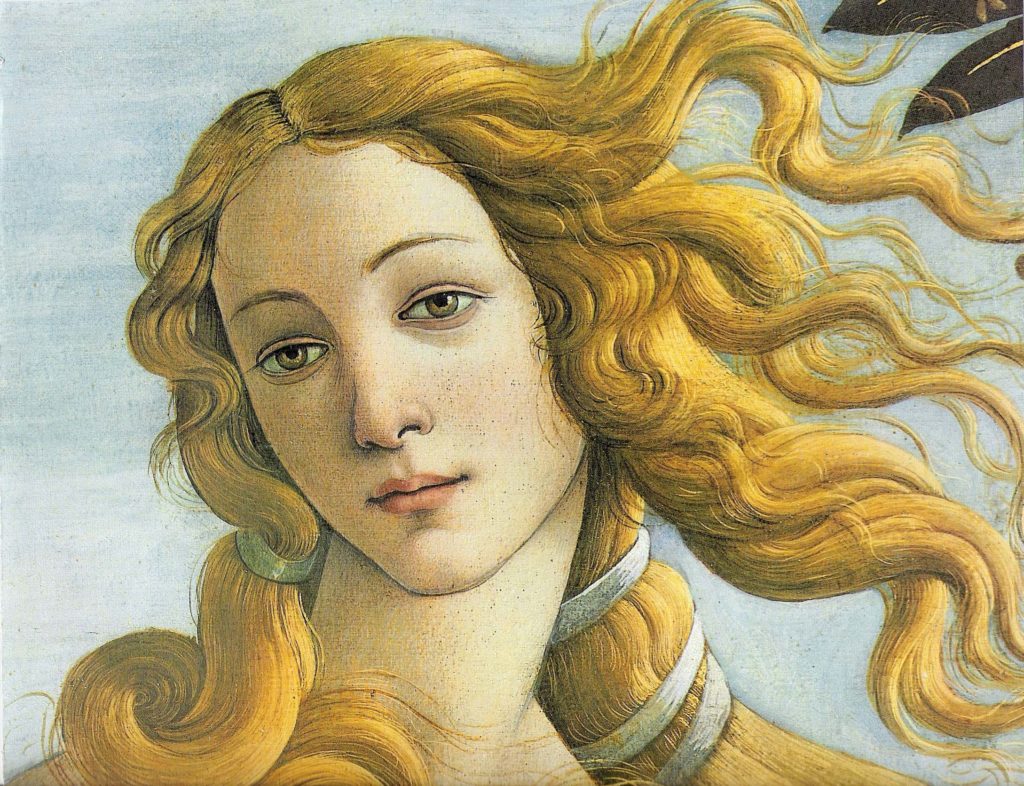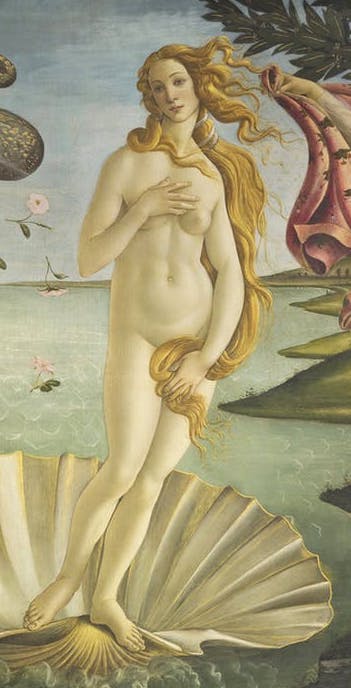Beyond the Cherubs: The Story Behind The Sistine Madonna
We’ve seen them on postcards, gift wrap, T-shirts, coffee mugs, and even tattoos. With their serene expressions and relaxed posture, Raphael’s...
Javier Abel Miguel 22 May 2025
Some might say that Venus is the most important of deities since she is the one we associate with love and beauty. The relationship between Botticelli’s Birth of Venus and art history is a serious one and has been going on for centuries. Although you are definitely familiar with this painting, perhaps we can re-ignite your passion for the painting with some intriguing details you probably haven’t considered before!

Greco-Roman mythology was extremely in vogue during the Renaissance. The patrons of Botticelli, the Medici family, especially loved the mythologies and philosophies of the Greeks. For example, the idea that love and desire can inspire moral goodness. The Birth of Venus was most likely a commission for a bridal chamber; however, its name is a misnomer.
The story of the birth of Venus told first in Hesiod (c. 8th-7th century BCE), is much gorier:
Then the son from his ambush stretched forth his left hand and in his right took the great long sickle with jagged teeth, and swiftly lopped off his own father’s members and cast them away to fall behind him. And not vainly did they fall from his hand; for all the bloody drops … were swept away over the main a long time: and a white foam spread around them from the immortal flesh, and in it there grew a maiden … Her gods and men call Aphrodite, and the foam-born goddess and rich-crowned Cytherea.
Hesiod, Theogony, 180-200ff, English translation from the Greek by Hugh G. Evelyn-White.

Botticelli is not depicting Venus foaming out from the blood of a castrated penis. Although some suggest that the bottom-left bulrushes are perhaps a phallic allusion to that origin in particular. What he is showing is Venus arriving fully formed on the shore of Cyprus, the island where her divinity was worshiped. A much more pleasant image to act as an aphrodisiac for newlyweds.
Obviously, the central, serene nude is the deserving focus of our attention. Her nudity and long flowing hair are almost synonymous with idealized Western female beauty. Those key details are not by chance, which is made clear by the actions of the figures on her either side. To the left, we have personifications of the winds, blowing her to shore. On the right, we have a personification of springtime holding out a garment to cover up the nakedness. That wind then is performing two important functions: making those auburn locks stream and preventing that pretty pink throw from wrapping itself around that divine form.

It is clear that Botticelli’s Venus is a sexually alluring representation of the female body. Her hand gestures suggest modesty, but really just end up directing our eye line. Instead of unpicking a discussion of the problematic male gaze, which this painting may well represent, let’s discuss how Botticelli’s pagan image drew on overly religious images from the time.

Leonardo da Vinci, who is well known for his religious and scientific artworks, was, in fact, a contemporary and acquaintance of Botticelli. Perhaps surprisingly, considering the subject matter, there are obvious similarities between The Birth of Venus and da Vinci’s The Baptism of Christ. The central (almost) nude figure, the left-hand side pair, the surrounding dress, and even the right-hand side figure reaching out to the middle. There’s even what looks like a bulrush in the bottom left corner!



After Botticelli painted his Birth of Venus, a religious turn in Florence began to condemn pagan and sexual imagery. This was a serious time, for example, on Shrove Tuesday in 1497, supporters of the Dominican friar Girolamo Savonarola held a bonfire, known now as the “Bonfire of Vanities,” burning any objects thought to be “occasions of sin”. Sensibly, therefore, Boticelli’s later works move away from his depictions of Greek mythology towards religious imagery. However, that serene face of Venus still seems to persist, transforming her from an erotic image of sex and desire to the sacred image of the Madonna.



DailyArt Magazine needs your support. Every contribution, however big or small, is very valuable for our future. Thanks to it, we will be able to sustain and grow the Magazine. Thank you for your help!